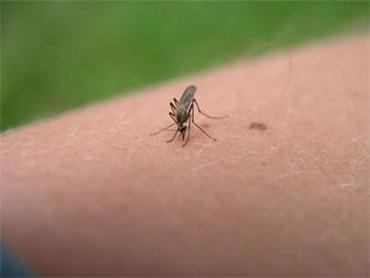
Malaria, Dengue Fever and Chikungunya can spoil the fun of the rains. Read on to find out how to keep yourself safe from them.
Monsoons are arguably the best time of the year for a tropical country like ours, when seemingly barren stretches of land suddenly turn green and temperatures drop to a pleasant low. But the onset of rains also brings with it diseases -- some water-borne and others insect-borne.
Diseases spread by insects, particularly, have become more of a growing concern over the past decade or so and a number of people have been afflicted recently -- Chikungunya, Malaria and Dengue Fever are the most common among them. Here's more on each:
Chikungunya
Chikungunya is a mosquito-borne viral disease that was first detected in 1952 in Africa at a place called Makonde Plateau. Since its discovery, chikungunya virus outbreaks have occurred occasionally in Africa, South Asia and Southeast Asia, and most recently in limited areas of Europe. The name "chikungunya" is derived from the Makonde word which means "that which bends up" in reference to the stooped posture of the sufferers with joint pain. It is a highly infective and disabling disease. In 2006, India reported more than 1.25 million suspected cases.
Causes
Chikungunya disease is a viral disease transmitted in humans by the bite of infected mosquitoes, Aedes aegypti and Aedes albopictus mosquito to be specific. These mosquitoes mainly reside in stagnated water and bite mainly during daylight hours with peak activity in the early morning and late afternoon. The virus is transmitted from one person to another by the bites of infected female mosquitoes.
Symptoms
Chikungunya symptoms include an abrupt onset of fever accompanied by debilitating joint pain. Other common symptoms include nausea, headache, muscle pain, fatigue and rash. As the disease shares some symptoms with dengue, it can be misdiagnosed in areas where dengue is common. Typically, the fever lasts for two days and then ends abruptly. However, other symptoms like joint pain, headache and insomnia may last for about 5 to 7 days.
Prevention and Treatment
There is no cure for chikungunya. Treatment is based on relieving the symptoms. Most patients recover fully from the disease, but in some cases joint pain may persist for weeks or months, or in some cases years.
Steps to prevent and control the disease primarily include reducing the number of water-filled container habitats that support breeding of the mosquitoes. Insect repellent, clothing which minimises skin exposure, and staying in areas with screens are some of the ways to protect during an outbreak.
Malaria
Malaria is an infectious disease caused by a parasite, Plasmodium, which infects red blood cells. The name "malaria" means "bad air" in Italian. In 2008, an estimated 247 million cases of malaria occurred worldwide and nearly one million people died - mostly young children in Africa. In India, there has been proportional reduction in the number of cases during the past 9 years. The numbers have come down from 2 million reported cases in 2000 to 1.53 million cases in 2009.
Causes
Malaria parasites are transmitted from one person to another by the anopheles mosquitoes, called "malaria vectors", which bite mainly between dusk and dawn. Five species of the plasmodium parasite can infect humans; the most serious forms of the disease are caused by P. falciparum. In many parts of the world, the parasites have developed resistance to a number of malaria medicines.
Symptoms
Symptoms of malaria appear between 7 to 15 days after the mosquito bite and include fever, headache, shaking chills, fatigue and vomiting. If not treated, malaria can quickly become life threatening by disrupting the blood supply to vital organs. The loss of red blood cells in malaria may cause anaemia and jaundice (yellow colouring of the skin and eyes).
Prevention and Treatment
Malaria is preventable and curable. Early diagnosis and treatment of malaria reduces disease, prevents deaths and contributes to reducing its transmission. The best available treatment, particularly for P. falciparum malaria, is artemisinin-based combination therapy (ACT).
Mosquito eradication and prevention of mosquito bites is the primary method used to prevent the spread of disease.
Dengue Fever
Dengue fever pronounced, 'Den ghee' is a viral disease imitating flu. Dengue is found in tropical and sub-tropical climates worldwide, mostly in urban and semi-urban areas. According to WHO, about two fifths of the world's population is at risk from dengue and it is estimated that there may be 50 million dengue infections worldwide every year. Delhi and parts of North India always experience a large number of cases of Dengue.
Causes
Dengie fever is transmitted by the bite of an Aedes mosquito infected with any one of the four dengue viruses. Mosquitoes generally acquire the virus while feeding on the blood of an infected person and symptoms appear 3 to 14 days after the infective bite. A potentially lethal complication called dengue haemorrhagic fever (DHF) was first recognised in the 1950s during dengue epidemics in the Philippines and Thailand. DHF mainly affects children and os the leading cause of hospitalisation and death.
Symptoms
How to prevent the onset of insect-borne diseases
Each of these diseases requires specialised professional help to get cured. However, here are some tips to prevent the onset of these diseases: